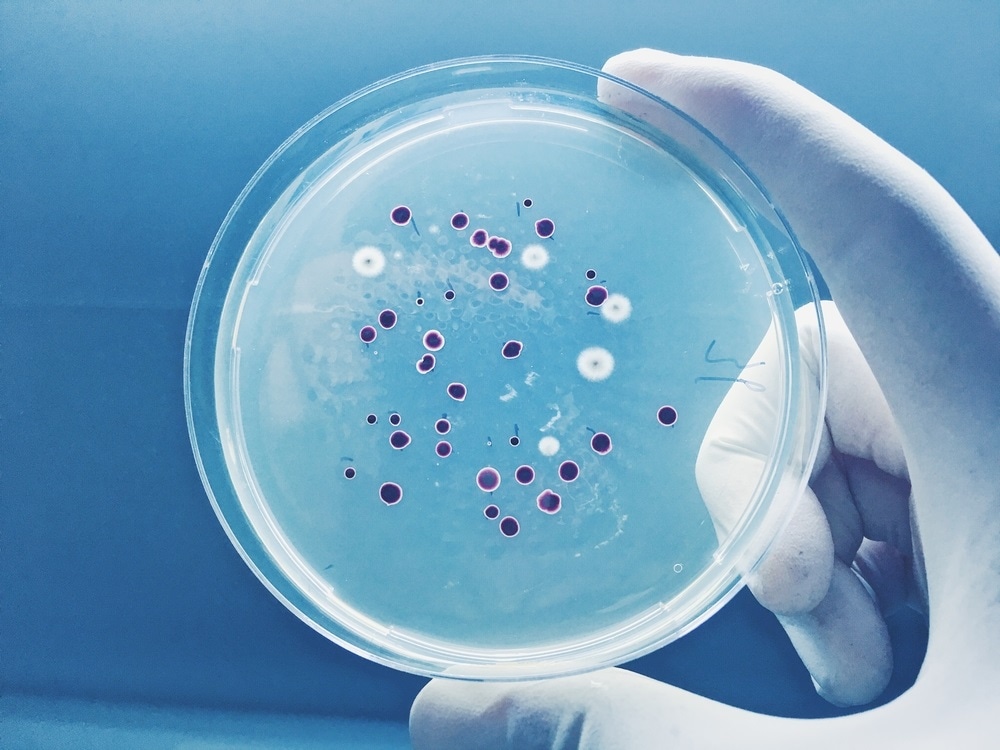A research team, including scientists from the University of Maryland and the University of Texas Medical Branch, has discovered how two different strains of the same species of flesh-eating bacteria work in combination to become more dangerous than either one of the strains alone.
The study, which could lead to more effective targeting of disease, was published yesterday in the Proceedings of the National Academy of Sciences.
 Image Credit: KuLouKu / Shutterstock.com
Image Credit: KuLouKu / Shutterstock.com
Standard diagnostics currently fail to identify “polymicrobial” infection
Over recent years, scientists have learned that severe and rapidly progressing infections that are resistant to treatment are often caused by an interaction between multiple microbes. However, these “polymicrobial” infections are poorly understood, and standard diagnostic techniques often mistakenly identify them as single-microbe or monomicrobial in origin.
Study author, Rita Colwell, says the current findings provide clear evidence that a very severe infection thought to be caused by a single species of a naturally occurring bacterium was actually caused by two strains.
One of the strains produces a toxin that breaks down muscle tissue and allows the other strain to migrate into the blood system and infect the organs."
Rita Colwell, University of Maryland
Flesh-eating necrotizing fasciitis
The initial infection, which was cultured from a patient who had the flesh-eating disease necrotizing fasciitis, was originally diagnosed by traditional methods as a single-microbe disease.
The single species of bacteria was identified as Aeromonas hydrophila, but clinicians were surprised to find that antibiotic treatment failed, and the disease quickly turned fatal, requiring the patient to undergo quadruple amputation.
However, using metagenomics to analyze the bacterial culture, Colwell and colleagues identified important differences among individual cultures that standard diagnostic techniques are unable to detect.
The team discovered two genetically distinct strains
In two previous studies, the team found that two genetically distinct strains of Aeromonas hydrophila were involved in the infection. They named one strain necrotizing fasciitis 1 (NF1) and the other necrotizing fasciitis 2 (NF2).
On studying the two different strains, they found that neither strain caused severe, fatal infection by themselves. Only when both strains were present did the infection become deadly.
For the current study, the team switched genetic components that differed between the two strains, which resulted in NF1 behaving more like NF2 and vice versa. When these genetically manipulated strains were introduced into mice, the researchers could see how the variations affected the two strains’ interaction with each other and each strain’s ability to cause infection.
Together, the three studies provided a more detailed picture of how each strain behaves in both single-strain infections and when the two strains are combined.
The difference between separate and combined infection
In separate infections, NF1 stays localized, does not spread to the blood or organs, and is cleared by the immune system. NF2, on the other hand, makes a toxin that destroys muscle tissue and enables it to spread.
When the strains are combined, the toxin that NF2 produces breaks down muscle and allows NF1 to spread to blood or organs and become deadly. NF2 remains localized and is not able to spread because when it comes into contact with NF1, NF1 produces a component that kills it.
“Very elegant detective work”
Colwell says the team is excited about this very elegant detective work: "We now have the ability through metagenomics to determine the individual infectious agents involved in polymicrobial infections. With these powerful new methods, we can determine how microbes work together, whether they're bacteria, viruses, or parasites."
Being able to determine the different microbes at play in polymicrobial infections could significantly improve treatment outcomes among patients.
"When we treat with a given antibiotic, we're clearing an organism out of the body," Colwell said. "But if there's another organism that's participating in the infection and that's also pathogenic, then any antibiotic treatment that doesn't also target that organism may just be clearing ground for it to grow like crazy."
Only treating one microbe in cases of polymicrobial infection could be the reason that secondary or chronic infections develop that are resistant to treatment. Instead, a combination of antibiotics or other drugs may be needed.
Routinely analyzing infections using the metagenomics approach employed in this study could result in more effective targeting of treatments for diseases caused by polymicrobial infection.
Co-author Ashok Chopra concludes: “It is of paramount importance that proper tools are available to differentiate different strains of the bacteria as we used in our studies.”
Source:
Fernández-Bravo, A. et al. (2019) T6SS and ExoA of flesh-eating Aeromonas hydrophila in peritonitis and necrotizing fasciitis during mono- and polymicrobial infections. PNAS. DOI: 10.1073/pnas.1914395116